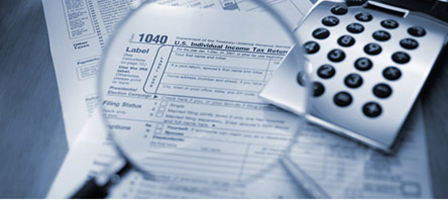HOME OFFICE EXPENSES OF A SMALL BUSINESS ORGANIZED AS A CORPORATION
Many entrepreneurs and professionals have found it convenient and cost-effective to set up their office or practice in an area in their home. There is no commute time or overhead expenses, and they don’t have to worry about paying someone else office rent. Home-office deductions may be available to these taxpayers whether they are self-employed or employees. What if the taxpayer’s business or practice located in the home is incorporated? This article provides an overview of the general rules about home office expenses and then discusses the special home office issues faced by a corporate sharehold-employee.
General Home Office Expense Rules
Business expenses, such as salary, depreciation or expense deductions for business equipment, supplies and the like, are deductible without regard to the home-office deduction rules and how the business is organized. The expenses that are at issue are the so-called direct and indirect expenses of a home office.
- Direct expenses are those that relate only to the home office, such as the cost of painting the room where the home office is located, or repairing the room’s leaking ceiling.
- Indirect expenses are those that relate both to the personal portion of the home and the business-use portion, that is, the home office. Indirect expenses include items such as utilities, real estate taxes, home mortgage interest, rent, homeowners insurance and repairs benefiting the entire property.
Direct expenses and the business-use portion of indirect expenses relating to a home office within a residence are deductible only if a portion of the home is used regularly and exclusive as:
(1) A principal place of business, or
(2) As a place to meet or deal with customers or clients in the ordinary course of business. Caution: Taxpayers who are employees must meet an additional test—their use of the home office must be for the convenience of the employer.
If the qualification test is met, and gross income from the business use of a taxpayer’s home equals or exceeds total business expenses (including depreciation), all expenses for the business use of the home can be deducted. If, however, the taxpayer’s gross income from that use is less than total business expenses, home office deductions are limited to the excess of the gross income derived from business use of the home over the sum of:
(1) The deductions allocable to business use that are allowable whether or not the unit (or portion of the unit) was so used (e.g., mortgage interest, real estate taxes, and casualty and theft losses), and
(2) The deductions (such as for salaries or supplies) allocable to the business activity in which business use of the home occurs, but which aren’t allocable to business use of the home.
A qualifying self-employed taxpayer claims home office expenses on Form 8829 (Expenses for Business Use of Your Home) and on Schedule C. A qualifying employee enters home office expenses on Form 2106 or Form 2106EZ and claims them as miscellaneous itemized deductions subject to the 2%-of-AGI floor. Note: Miscellaneous itemized deductions are not allowed against the Alternative Minimum Tax (AMT). Thus, if a taxpayer is subject to the AMT, they could lose part or all of the home office deduction benefit.
Problems of the closely held corporation
If the business operated out of a taxpayer’s home is organized as a corporation, direct and indirect expenses of the home office are the entity’s expenses, not the owner-employee’s.
From a tax standpoint, there are three ways to handle these expenses:
- Payment of rent – The corporation can pay its shareholder-employee rent to offset home office expenses and supply him with a return. The rent will be deductible by the corporation, assuming it’s a reasonable amount for the space and services actually provided, and will be taxable to the shareholder-employee. However, the shareholder-employee/homeowner won’t be able to claim offsetting deductions. The rules allowing deductions for business use of a dwelling unit do not apply to any expense attributable to the rental of all or part of a taxpayer’s dwelling unit to his employer during any period in which he uses the rented portion to perform services as an employee of the employer. For purposes of this rule, an independent contractor is treated as an employee, and the party for whom the independent contractor is performing services is treated as an employer. Where such a lease arrangement exists, the only deductions that are allowable are those that could be claimed in the absence of any business use, e.g., mortgage interest, real estate taxes and casualty losses.
- Unreimbursed employee expenses – The shareholder-employee can satisfy the convenience of the employer test if he is working in the only location of the business. Assuming that he meets the other home-office requirements, the shareholder-employee can claim home office deductions as if he were a qualifying employee of an unrelated corporation, namely treat them as unreimbursed employee expenses on Schedule A. To ward off a possible attack on the grounds that the shareholder-employee is paying expenses he could have sought reimbursement for, there should be a written agreement to the effect that the shareholder-employee is required to pay for expenses. Although this approach appears to be clean, neat and simple, there are a number of unattractive consequences:
o The shareholder-employee can only deduct home office expenses to the extent the total of his miscellaneous deductions exceeds 2% of his AGI—this rule may bar home-office deductions altogether.
o Claiming home office deductions may increase the taxpayer’s chances of being audited.
o As mentioned earlier, the deduction is not allowed against the AMT, which could reduce or eliminate the deduction if the individual is subject to the AMT.
o Depreciation deductions claimed for the business-use portion of the home reduces the owner’s basis in it, and any home sale gain representing depreciation adjustments attributable to post-May 6, ’97 periods isn’t eligible for the $250,000/$500,000 home sale exclusion.
- Reimbursed employee expenses – The shareholder-employee can treat his home office expenses as if he were a regular employee, and then, by written pre-arrangement with the corporation, have it reimburse him for these costs after he substantiates them in full (amount, time, place, and business purpose of each expense). Results: Assuming the shareholder-employee could have claimed the expenses as business deductions the reimbursement for the expenses is fully deductible by the corporation and is a tax-free accountable-plan reimbursement to the employee. The shareholder-employee avoids having to claim attention-generating home-office deductions, and doesn’t have to struggle with depreciation deductions and basis adjustments. However, the shareholder employee can’t deduct the business-related portion of his mortgage interest and property tax if the corporation gives him a tax-free accountable-plan reimbursement for these items. Otherwise, he would be getting a double tax benefit—a deduction and tax-free reimbursement—from the same expense.
A home office will be treated as a principal place of business if a portion of the home is used for the administrative or management activities of any trade or business of the taxpayer, but only if there is no other fixed location where the taxpayer conducts substantial administrative or management activities of that trade or business. Deductions will be allowed for a home office meeting this test only if the other applicable requirements are satisfied—i.e., the home office must be used exclusively and regularly and, in the case of an employee, that exclusive use must be for the convenience of the employer.







Leave a Reply
Want to join the discussion?Feel free to contribute!